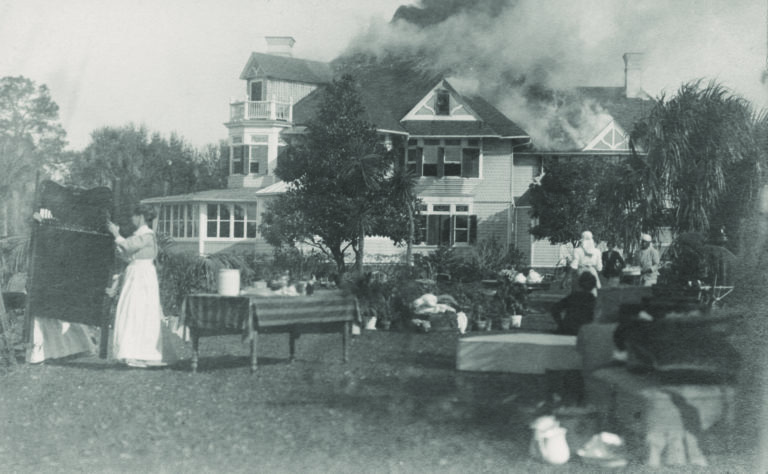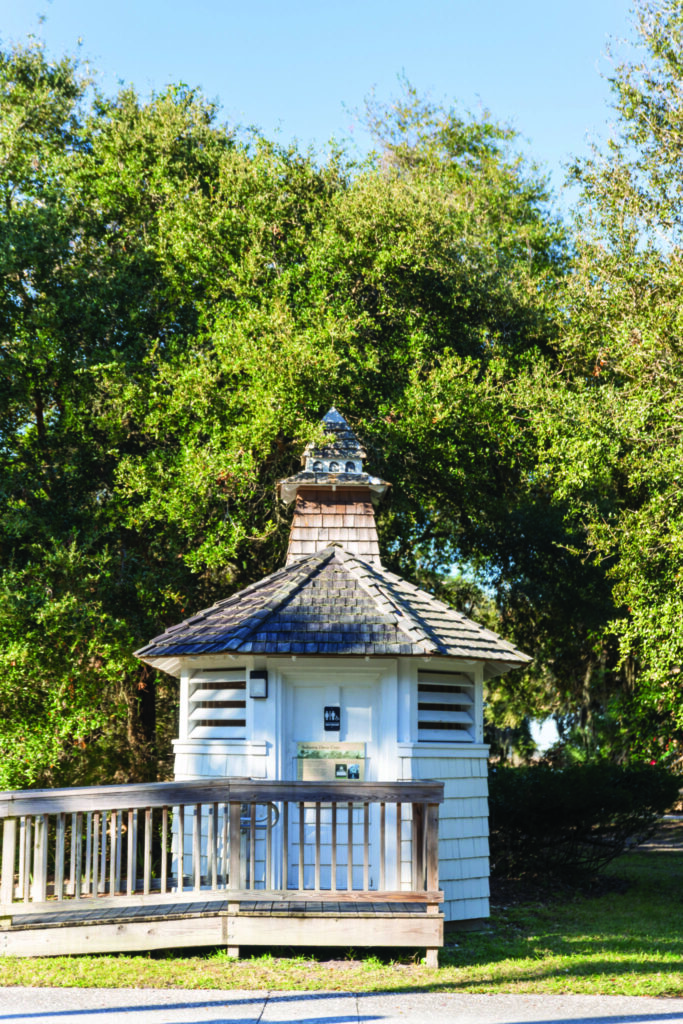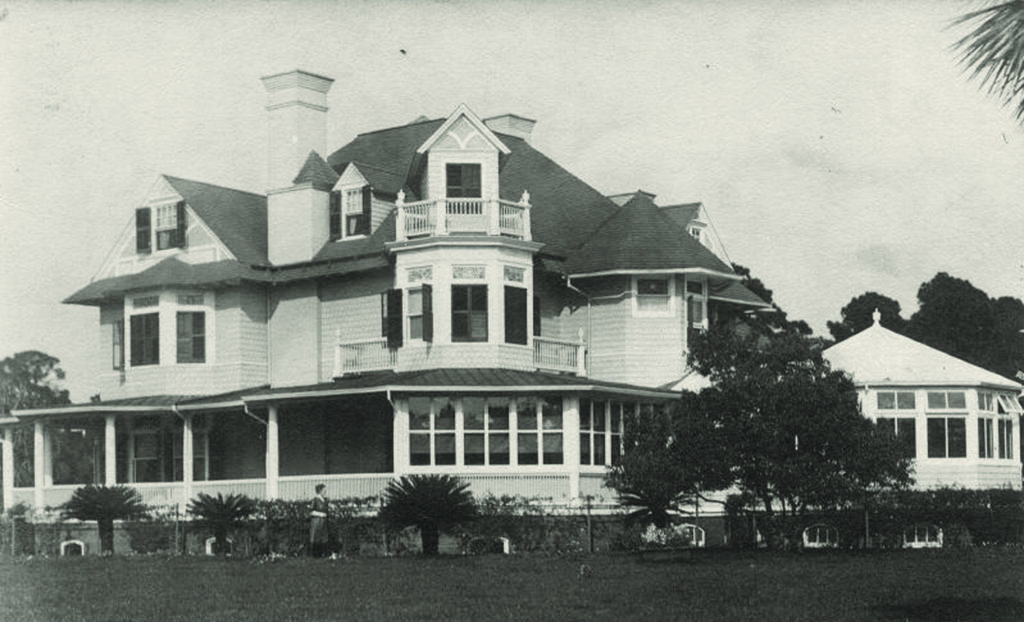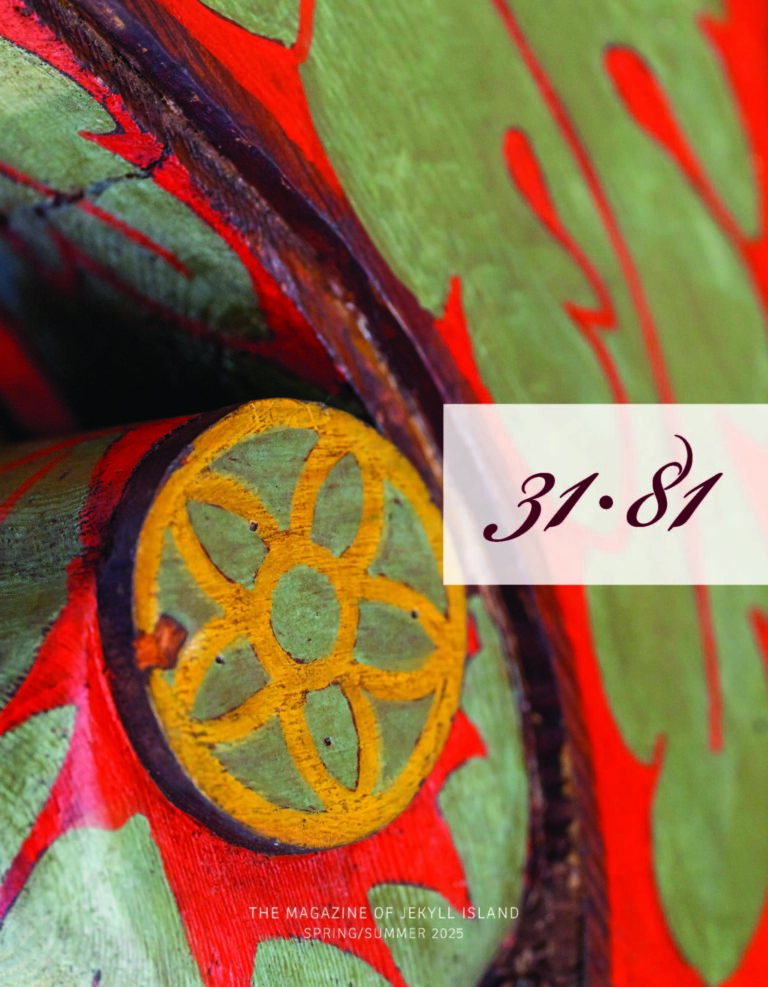A remarkable old structure gains a surprising new life.
By LISA MOWRY
Like many of its architectural ancestors in Europe that date back thousands of years, Jekyll Island’s singular dovecote existed first as a status symbol. From a strictly practical standpoint, dovecotes (then and now) are simply large birdhouses that serve as a home for doves or pigeons. But these structures always have been decorative, too, appealing to homeowners as a clever piece of architecture. Distinguished by the small holes that allow birds to enter (while keeping out predators), the buildings are still found, in varying styles and sizes, all over the world.
Jekyll Island Club members Frederic and Frances Baker boasted a 16-foot by 10-foot octagonal dovecote built in the 1890s, a charming addition to the New Yorkers’ grandiose vacation home, Solterra Cottage. “The wealthy Baker family had several homes, and they used Solterra Cottage for a winter escape and a place for hunting,” says Taylor Davis, historic preservationist for the Jekyll Island Authority (JIA). “They raised doves as game birds.” Their cedar-shingled dovecote—one of several octagonal structures on the island, Davis notes—had pine louver vents (to allow the birds to fly in) and a cedar-shingle roof to complement the Queen Anne-style main house. In its glory days, Solterra Cottage was extravagant. It hosted President William McKinley and his entourage during his 1899 visit to the island.
Alas, the house burned to the ground in 1914, though the dovecote, which always intrigued visitors and historians, was spared. The land where Solterra Cottage sat later became home to Crane Cottage, and the dovecote was moved around the island several times over the years. At one point, it was taken to the beach to be used as a refreshment stand. It eventually fell into disrepair.

Interest in the Solterra dovecote never waned, though. Repairing it and maintaining it remained a goal for many who consider it a beloved example of the sort of unusual architecture favored by the nation’s wealthiest citizens. Volunteers initially helped stabilize the dovecote in 2015. Then, in 2018, the JIA received a grant from the state, and the dovecote was transformed. It was moved by forklift closer to the road, tied into the existing sewer system, revamped inside, and a ramp was added to make it comply with the Americans with Disabilities Act. So was born perhaps the island’s most notable bathroom.
Davis acknowledges that it’s an unlikely example of the adaptive reuse of historic buildings, something that has been done with many other structures on the island. The Georgia Sea Turtle Center, for example, was once a power plant. Mosaic, Jekyll Island Museum was originally the horse stables for the Jekyll Island Club. Still, the dovecote-turned-restroom is now popular with both visitors and volunteers. “People remark that it’s one of their favorite restrooms on the island,” Davis says.
Despite all the changes over the years, the Solterra dovecote retains its original architectural charm. Davis points out that without a modern-day use for buildings, old architecture is often doomed. “The worst thing for a historic structure is to lie dormant,” the historian says. “This way, we can ensure that the dovecote will be here for a while.”



